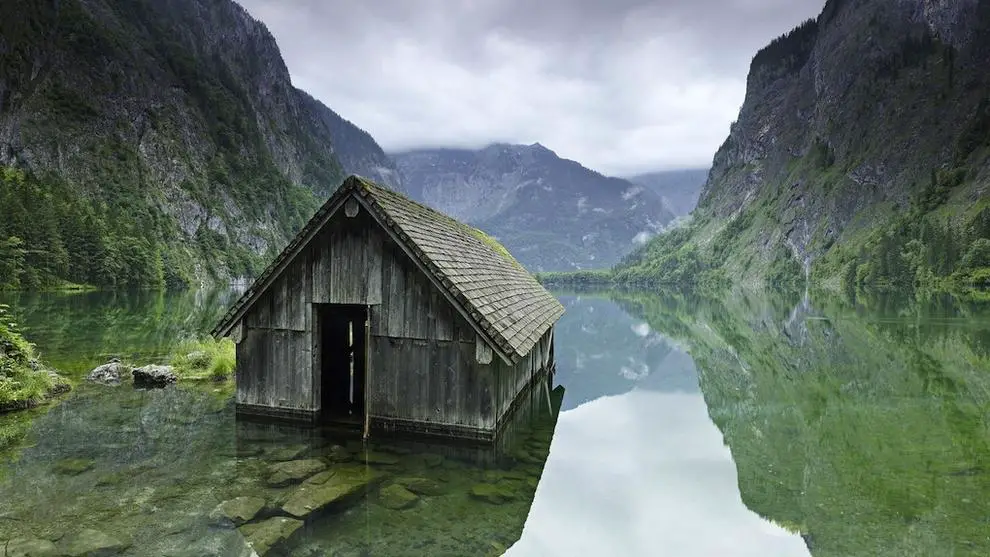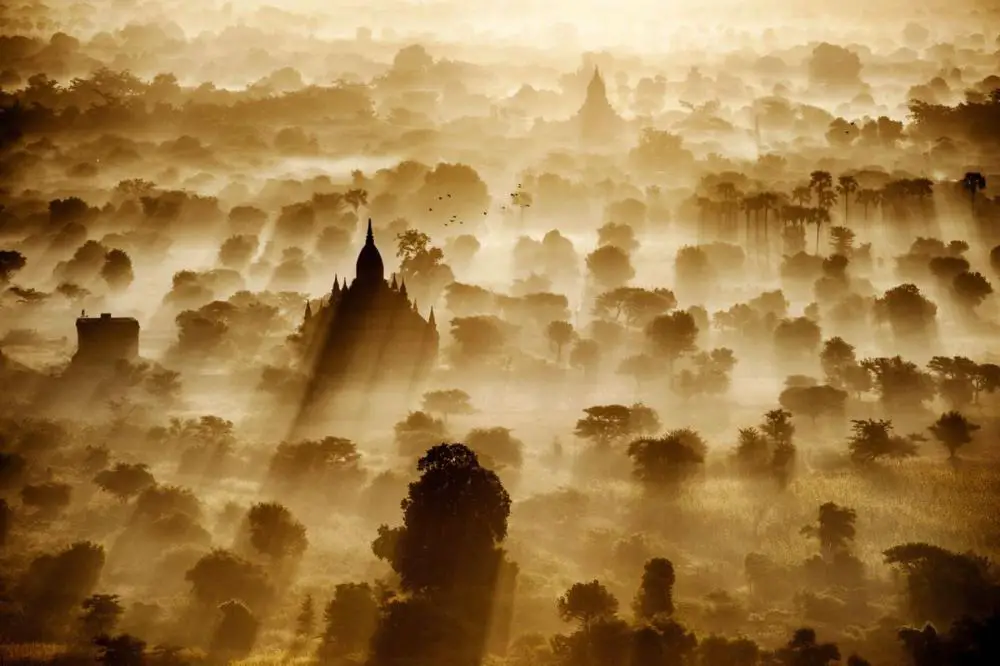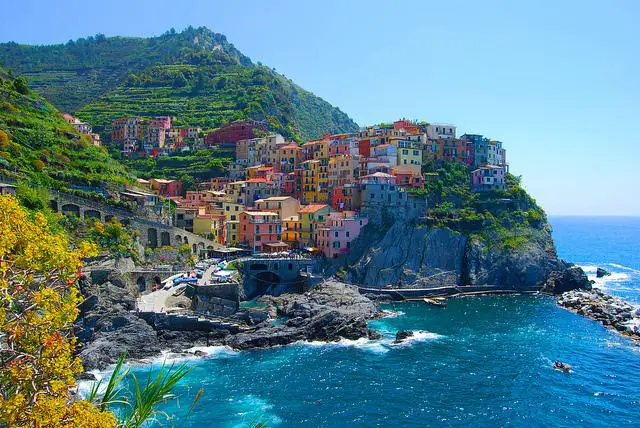Our planet is an incredible place, full of breathtaking landscapes and landmarks that words simply can’t describe. Every corner of the earth is home to some natural or man-made landmark that inspires awe in all who see it. While a picturesque sunset or a stunning sun- rise can make just about any place feel special, there are certain locations on this planet that are so unique and exceptional, they have to be seen to be truly appreciated. The fol- lowing is a list of 20 of the most awe-inspiring landmarks to visit before you die. After all, life is short, why not fill it with beauty.
Bryce Canyon. USA
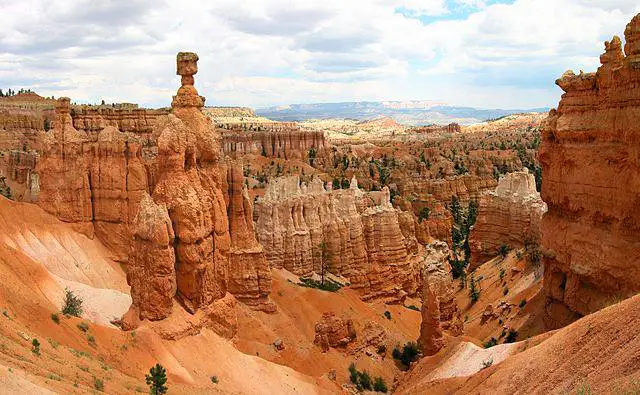
It may not be as well-known as the Grand Canyon but what Bryce Canyon lacks in popularity, it more than makes up for in sheer beauty. Although the name would suggest otherwise, Bryce Canyon is actually not a canyon at all and is made up of giant structures called ‘hoodoos’, that have naturally formed through years of ice and water erosion. The red, white and orange colour of the rocks are visible from miles around, while the giant towers provide an incredible area for visitors to explore.
Great Wall of China
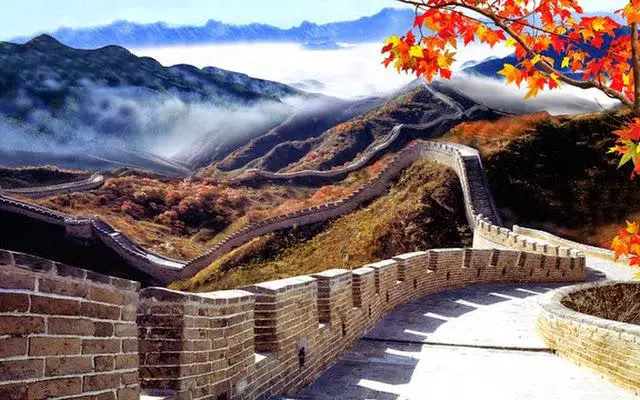
If you want to visit a spectacular landmark with thousands of years of history, The Great Wall Of China will not disappoint. Parts of the wall date all the way back to the 7th Century BC and the entire structure (including all its branches) is estimated to measure over 13,150 miles in length! While some parts of the wall have been demolished for construction or have simply eroded away, there are still large sections of the wall intact and tourists travel from all over the globe to visit (and walk along) one of the most famous landmarks on the planet.
Angel Falls. Venezuela

Waterfalls always provide an impressive spectacle but Angel Falls in Venezuela takes things to a whole new level. This incredible natural beauty is officially the world’s highest uninterrupted waterfall and drops an eye-watering 979m from top to bottom! The falls are located on the Gauja River and are one of Venezuela’s most popular tourist attractions. What makes Angel Falls even more spectacular is the fact that it is surrounded by dense jungle, making it difficult to reach, but a trip that is well worth the effort for the stunning surroundings.
Machu Picchu. Perú
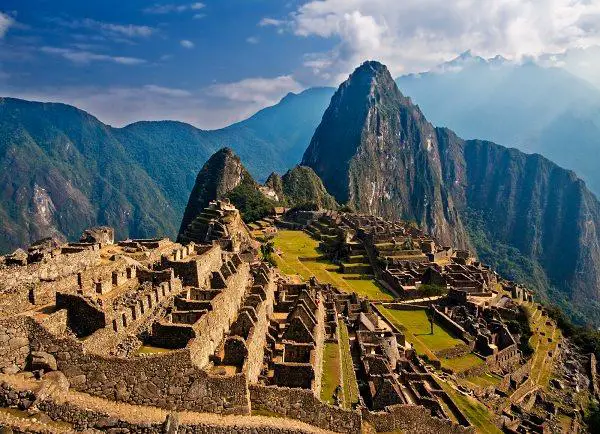
One of the most beautiful and famous historical sites in the world, Machu Picchu is located in the Cusco Region of Peru, some 4,230m above sea level. The site is believed to date back to 1450 and was built by the Incas for their emperor Pachacuti. The Incas abandoned the site around the middle of the 16th Century due to the Spanish Conquest. The location of Machu Picchu was known only to locals until 1911 when American Historian, Hiam Bingham, brought it to the attention of the wider world. Since then the site has been a huge tourist attraction, with large parts of the settlement being restored over the last century.
Petra. Jordan
It may look like something straight out of an Indiana Jones film but Petra is a real-life city that dates all the way back to around 300 BC. The historical site is most famous for its incredible architecture, where buildings were cut and chiselled straight out of the rock. The ancient site attracts huge numbers of tourists each year and is also known as the ‘Rose City’, due to the colour of the stone. UNESCO has even described Petra as ‘One of the most precious cultural properties of man’s cultural heritage.’
Victoria Falls. Zimbabwe
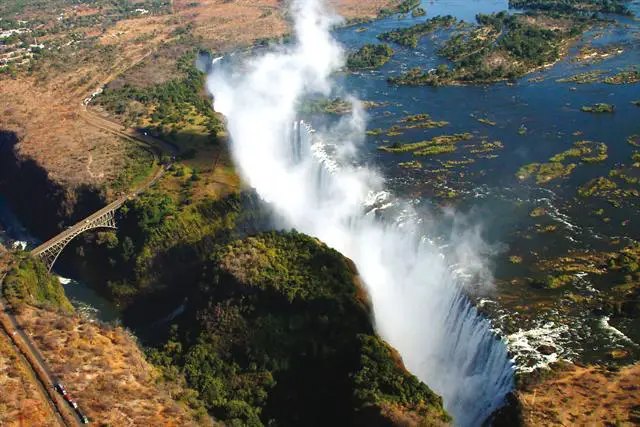
A number of ‘falls’ have made this list but Victoria is arguably the most impressive of them all. The incredible natural beauty is located in Zimbabwe and is officially classified as the world’s largest waterfall. Victoria measures an astonishing 1,708m wide and 108m high, making it the biggest sheet of falling water on the planet. To put into perspective just how enormous Victoria is, the falls are roughly twice as high as Niagara Falls! The natural beauty and sheer expanse of Victoria Falls makes it one landmark everyone should visit in their lifetime.
Christ on the Corcovado. Rio, Brazil
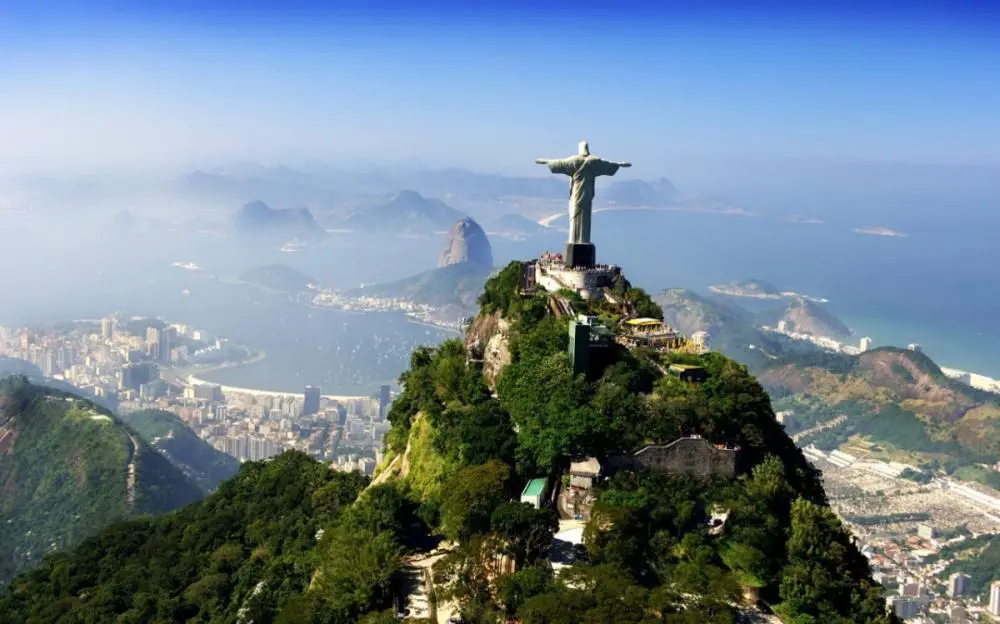
The statue of Cristo Redentor (Christ the Redeemer) is one of the most famous landmarks in the world and stands proudly over the Brazilian city of Rio de Janeiro. The statue was built between 1922-1931, was carved out of soapstone and weighs in at an impressive 635 metric tons. The statue attracts visitors from all over the world and it is easy to see why. Not only does the Cristo stand at 38 metres tall and 28 metres wide, but it is also placed on top of the 700m peak of the Corcovado mountain, making it both an incredible place to visit and visible for miles around. There is no wonder it is one of the most awe-inspiring wonders in the world.
Colosseum. Rome, Italy
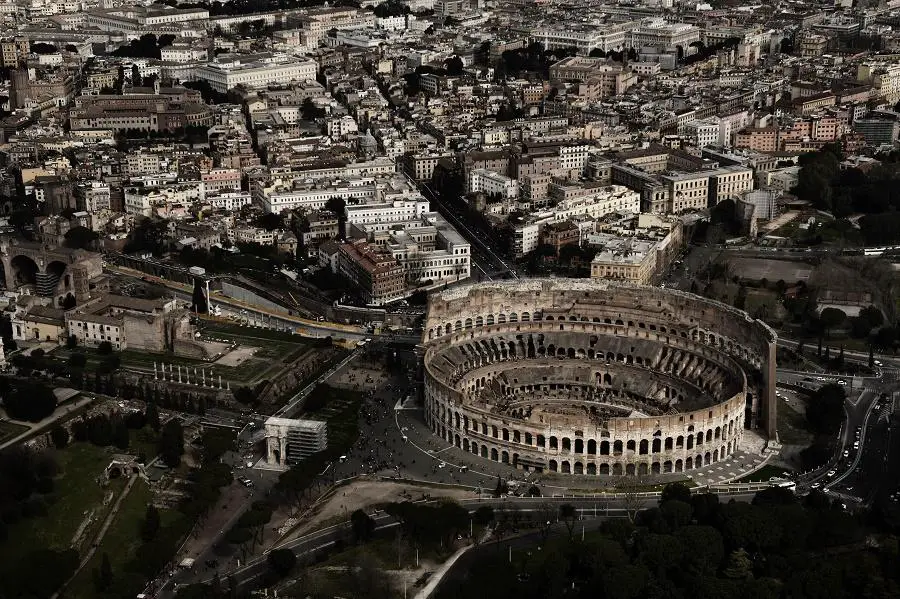
In terms of sheer history and spectacle, there are few landmarks in the world that can match Rome’s Colosseum. The amphitheatre dates back to 80AD and is considered one of the greatest examples of Roman architecture and engineering. When it was in fully functioning order, the Colosseum housed around 50,000 – 80,000 spectators and regularly staged gladiator contests and other public spectacles such as executions, animal hunts and theatrical dramas. Although large parts of the amphitheatre have since been damaged by earthquakes, the remaining structure is still incredibly impressive and one of Italy’s most popular tourist attractions.
Ayers Rock. Australia
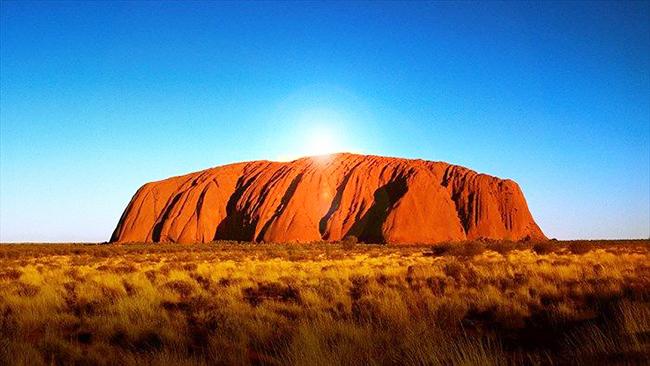
Australia is famous for its ‘great outback’ and a visit ‘down under’ wouldn’t be complete without taking in one of the country’s most famous landmarks, Uluru or ‘Ayers Rock.’ The huge rock is made from sandstone and stands at an impressive 350m high, with an even larger part of the natural structure found underground. One of the most striking facts about Ayers Rock is its location, with the mountain jutting up right in the middle of its flat and barren desert surroundings. Uluru is also incredibly remote, with the nearest large town being Alice Springs, over 450km away by road. It may not be the easiest landmark to visit but it is certainly one of the most striking.
Mount Fuji. Japan
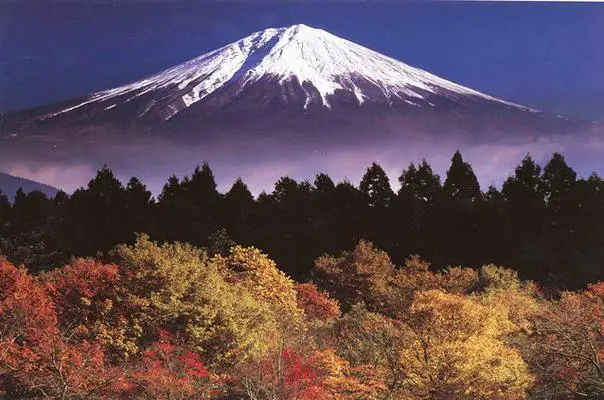
Mount Fuji is one of Japan’s most famous landmarks; the stunning mountain attracts visitors from all over the world. One of the most striking points about the active volcano is the fact that it is in such close location to the country’s capital. Tokyo is just 60 miles north east of it and, on a clear day, the snow-capped Mount Fuji can perfectly be seen from the capital city. One of the best times to visit the mountain is in Spring, when the famous cherry blossom is in full bloom, providing a beautiful setting in which to admire the landmark.
Patagonia Glacier. Argentina
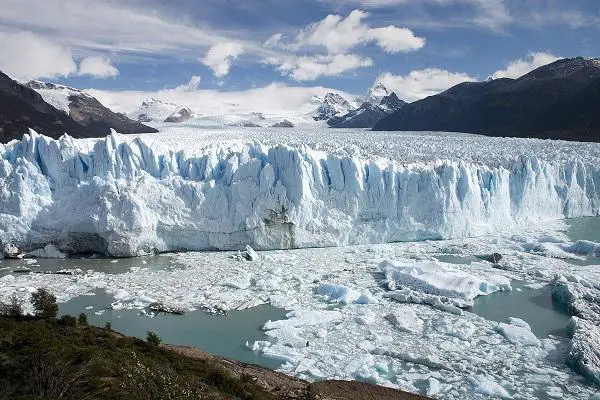
A trip to South America would not be complete without visiting one of the continent’s most popular and stunning landmarks, the Perito Moreno Glacier. The huge stretch of ice is located in the Santa Cruz Province of Argentina and measures an incredible 250 square kilometres. The glacier is fed by the Southern Patagonian ice field located in the Andes and is officially the world’s third largest reserve of fresh water. The stunning ice field is also a huge tourist attraction, with visitors now having the opportunity to trek across parts of the glacier itself.
Stonehenge. England
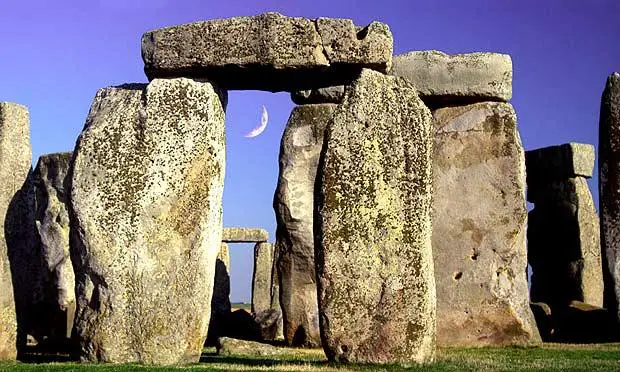
In terms of man-made landmarks with long histories, few can match Stonehenge in Wiltshere, England. The prehistoric monument dates back to some time between 3000 to 2000 BC and is one of the most famous landmarks in the world. The remaining standing stones were once part of a much larger monument that included several hundred burial mounds. There are a number of theories as to what Stonehenge was actually used for, but the most popular ideas suggest that it was a religious site, a place of healing or an astronomical observatory. Many of these theories are still hotly debated but one point that cannot be argued with is the fact that Stonehenge is one of the most awe-inspiring landmarks on the planet.
Trolltunga. Norway
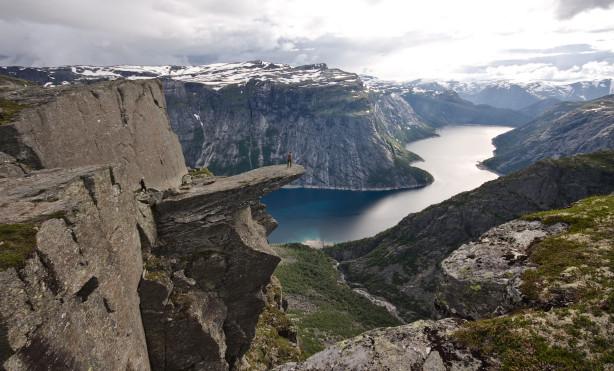
If you want to visit a landmark with a view, then Trolltunga should be the next destination on your list. The jutting rock platform is located in Hordaland County, Norway and simply translates as ‘The Troll’s Tongue.’ The rock resembles a giant diving board and sits an impressive 700m above lake Ringedalsvatnet. It attracts visitors from all over the world and provides a stunning view of the lake below and the snow-capped mountains surrounding it. If you’re feeling especially brave, you can even creep right to the edge of the platforms and look down to the lake below but be wary, there are no safety railings on it!
Zhangye Danxia Landform. China
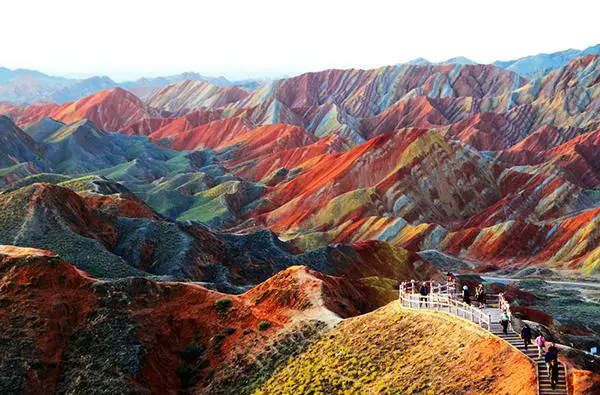
At first glance, visitors to the Danxia Landform in China would be forgiven for thinking they’re witnessing something from a dream, but the incredible colours of the mountains are not only real but 100% natural. The multicoloured layers of the rocks are formed by a unique type of petrographic geomorphology that sees the uplifted crusts of sandstones and conglomerates erode over time to form the incredible layers. The Danxia Landform is not only one of China’s most popular tourist destinations but also one of the most spectacular landmarks in the world.
Antelope Canyon. USA
There are canyons all over the world but one of the most breathtaking and beautiful examples can be found in Arizona, USA. Antelope canyon is a slot canyon that has been formed due to thousands of years of water erosion and flash flooding that has carved passageways into the Navajo Sandstone. Antelope is made up of two separate sections, the upper canyon, known as ‘The Crack,’ and the lower section, known as ‘The Corkscrew.’ The landmark attract thousands of visitors each year due to their incredible beauty and size. Visitors have to be incredibly careful during monsoon season though, as the canyon is at high risk of flash flooding.
Niagara Falls. Canada-USA
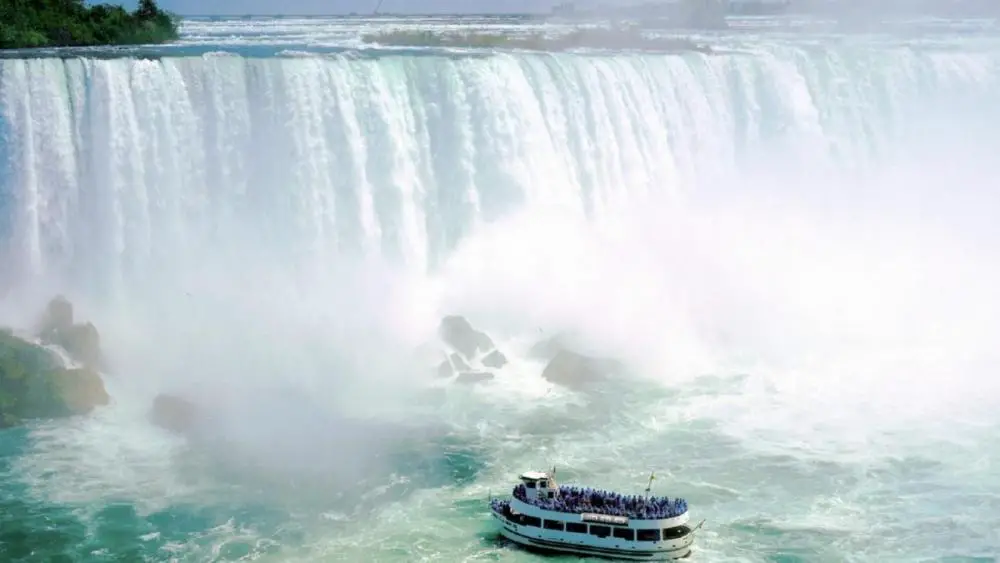
Niagara falls is arguably the most famous waterfall in the world. The site is actually made up of three separate falls, the Horseshoe Falls, the American Falls and the Bridal Veil Falls; the three combined make Niagara the highest flow rate of any waterfall in the world. Niagara is also one of the world’s biggest tourist attractions, with around 30 million people visiting it each year. It has also been featured in a number of different films and TV programmes and has seen a number of tightrope walks across the gushing water; the most recent being Nik Wallenda’s unsupported walk in June 2012.
Great Pyramid of Giza. Egypt
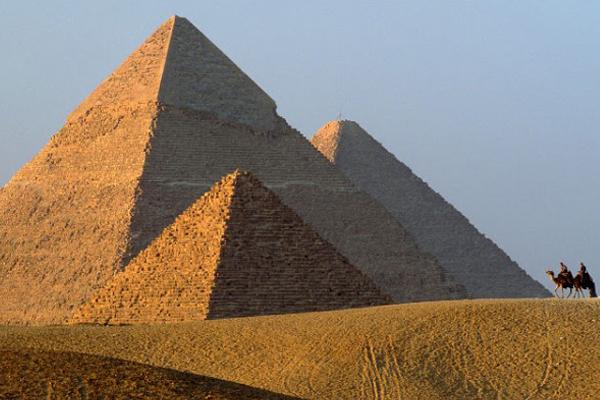
The Great Pyramid Of Giza is one of the ‘Seven Wonders of the Ancient World’ and it’s easy to see why. It’s one of the most amazing landmarks on the planet. The Great Pyramid is the largest and oldest of the three, in the Giza Necropolis and it is also the only pyramid to stay largely intact. Experts believe that the Great Pyramid was built over a 10-20 year period and dates all the way back to 2560 BC. The ancient structure originally measured 146.5m high and held the title of the ‘tallest man-made structure in the world’ for over 3,800 years! The pyramid itself contains three chambers inside: The Queen’s Chamber, the Grand Gallery and the King’s Chamber.
The Grand Canyon. USA
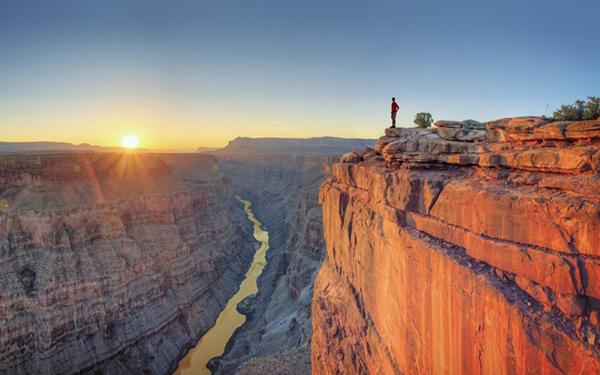
The Grand Canyon is arguably the most famous canyon in the world and attracts millions of visitors each year. The huge landmark measures 277 miles long, is up to 18 miles wide and has a depth of over 1 mile down at its deepest point. The canyon was carved by the Colorado River and experts believe that the river first made its way through the canyon over 17 million years ago. The natural beauty of the landmark attracts visitors from all over the world, while activities such as rafting, hiking and helicopter rides, also make it an incredibly popular destination.
Acropolis of Athens. Greece
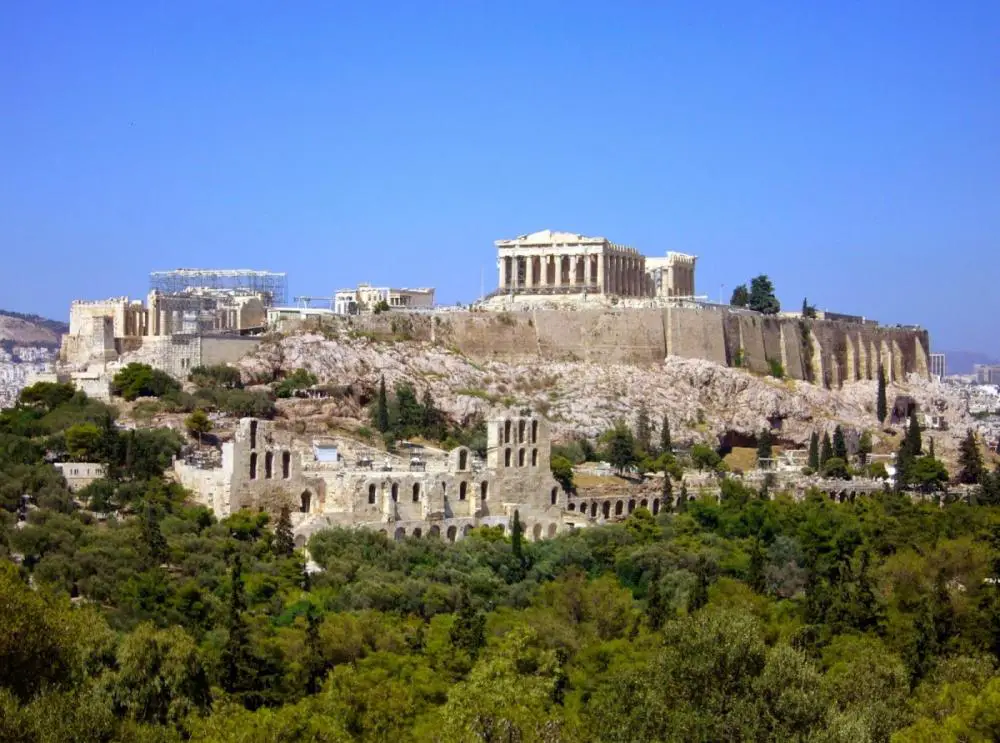
Acropolis of Athens is not only an incredibly important historical and architectural landmark but also a popular tourist attraction. The ancient citadel is located on top of a rocky mound above the capital city of Athens. The site is believed to date all the way back to around 4000 BC but the majority of the buildings and structures that remain today have been built around 450 BC. Acropolis was also the location for the Panathenaea procession, which was an ancient festival similar to the Olympic Games.
Yosemite National Park. USA
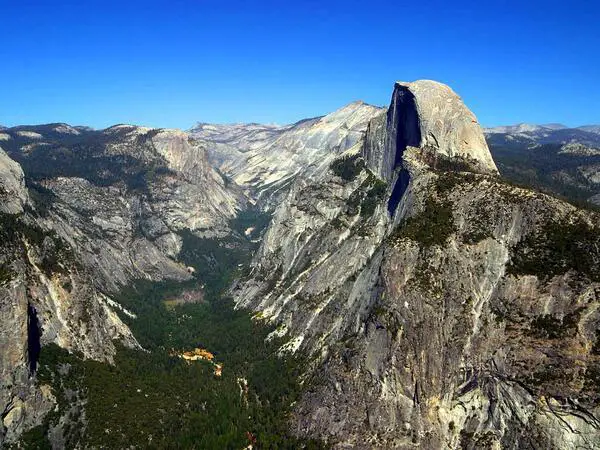
Yosemite is arguably the most famous and most popular national park in the world. Nearly 4 million people visit the park each year to camp, hike, climb and raft. Yosemite is known for its incredible beauty, with spectacular granite cliffs, stunning waterfalls and crystal clear streams and rivers. The most famous of Yosemite’s landmarks is El Capitan, a 3,000 ft high cliff face that is known as one of the toughest climbs in the world. The cliff face attracts both climbers and base jumpers from all over the world and is the absolute definition of ‘awe-inspiring.’

